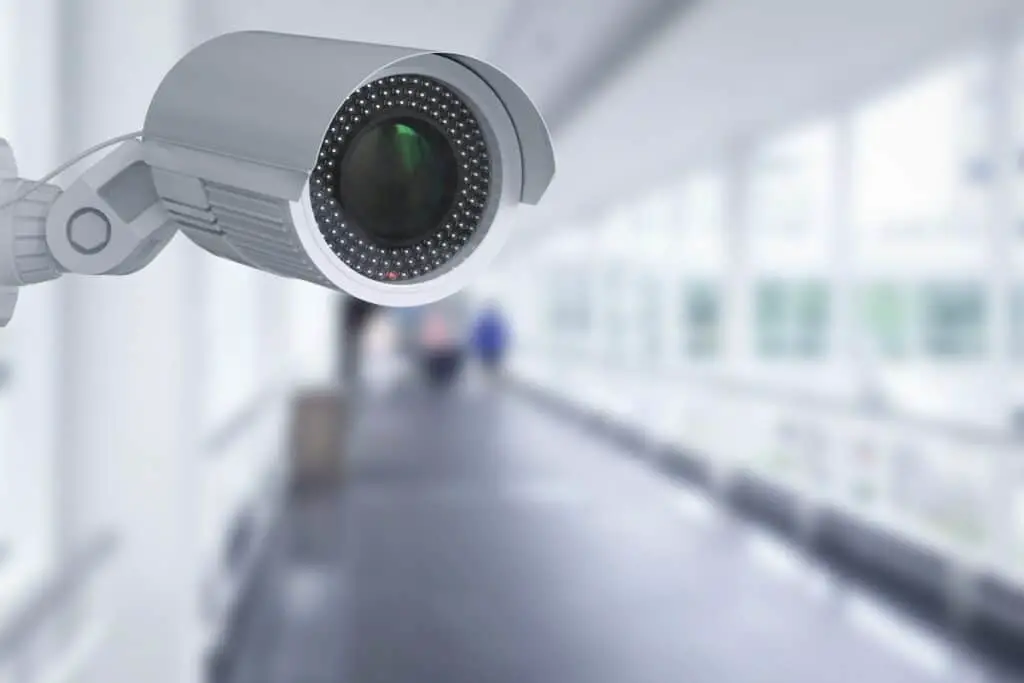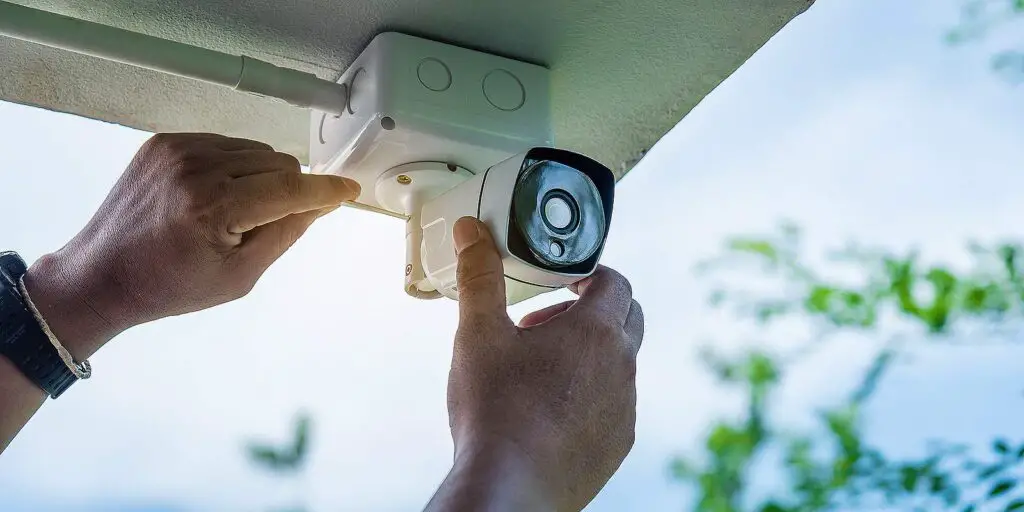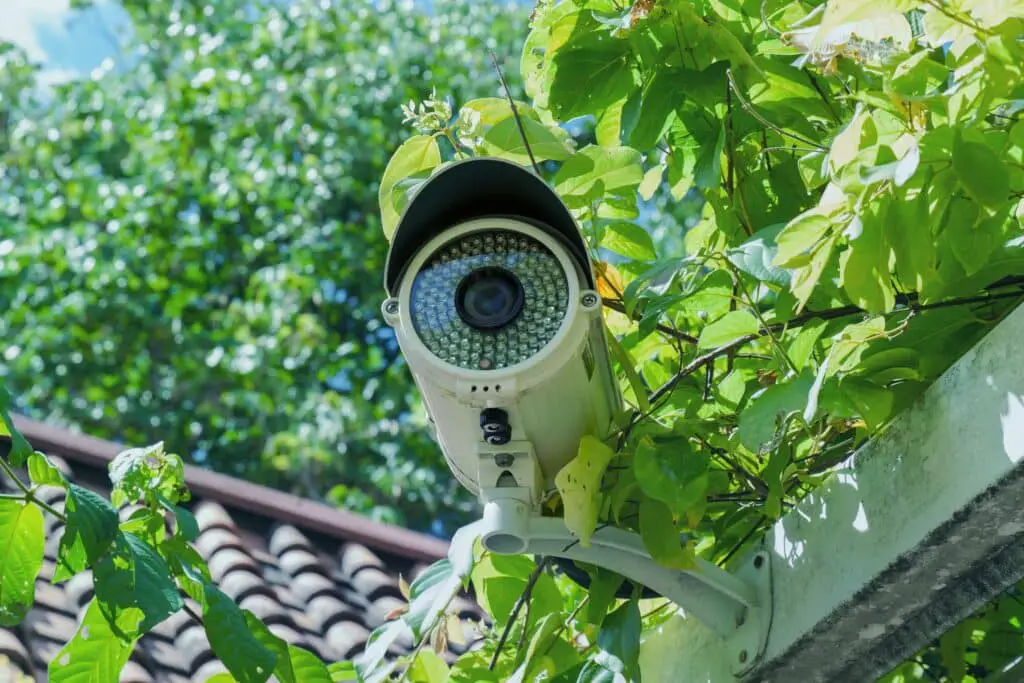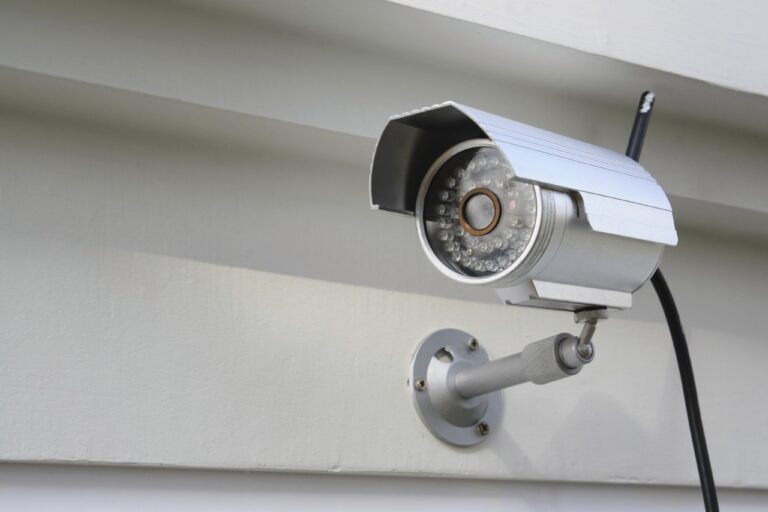Introduction
In an increasingly connected world, security cameras have become an integral part of our lives, helping us keep a watchful eye on our homes, offices, and personal spaces. While security cameras provide valuable surveillance and peace of mind, there are instances where you may want to hide them from plain sight. Whether it’s to maintain privacy, maintain a minimalist aesthetic, or catch someone unaware, knowing how to effectively conceal a security camera indoors can be a useful skill.
It requires smart placements that maximize coverage while limiting visibility. This will show you how to disguise your security camera to get the surveillance you need without compromising privacy or beauty.
We’ll cover interior choices from camera kind and form factor to imaginative hiding areas. We will also cover ways to hide cameras in home items or mix them into the décor. These methods allow you to stay undetected and collect critical evidence.

How can I hide my CCTV camera indoors?
Try these common items in your house that could help to hide a security camera inside and outside easily:
- Book shelves.
- Smoke detectors.
- Desk plants.
- Tissue boxes.
- Stuffed teddy bears.
- Fake rocks.
- Fake hanging potted plant.
Choose the right camera type: Start by selecting a camera that suits your concealment needs. Consider compact cameras or dome cameras, as they are easier to hide due to their small size and inconspicuous design. Dome cameras can be fixed on ceilings or walls and provide a wide-angle view while being discreet.
Strategic camera placement: Carefully plan the placement of your CCTV cameras to maximize coverage while minimizing their visibility. Identify areas of high importance, such as entryways, hallways, or rooms with valuable assets, and position the cameras accordingly. Ensure that they have an unobstructed view and cover the desired angles without drawing attention.
Camouflage within everyday objects: One effective method of hiding CCTV cameras indoors is by disguising them within everyday objects. This can include items like clocks, smoke detectors, or even potted plants. These covert cameras are designed to blend seamlessly with their surroundings, making them virtually undetectable. Ensure that the chosen object does not obstruct the camera’s lens or compromise its performance.
Blend with the environment: Another way to hide your CCTV camera is by selecting a camera with a casing that matches the color and texture of the surrounding environment. For example, if the camera is to be mounted on a brick wall, opt for a camera with a housing that resembles the color and texture of the bricks. This helps the camera blend in and go unnoticed.
How can I hide my security cameras discreetly?
Tips on Hiding a Security Camera
- Behind posts or ledges, where they are not visible from the street.
- Behind indoor windows, facing out.
- Near the mailbox.
- A tree.
- On a basketball hoop.
- In a birdhouse or other lawn décor.
- Inside a bush or a rock (or, fake rock)
- In a plant/pot.
Opt for compact cameras: Start by selecting small, compact security cameras. These small cameras can be concealed. Micro cameras can be hidden or built into everyday items.
Strategic placement: Proper placement of security cameras is crucial for discreet hiding. Identify areas that require monitoring and determine optimal camera placement. Consider angles and coverage areas, ensuring that the cameras capture the desired view without being easily noticed. Common locations include corners of rooms, high on walls or ceilings, or behind objects.
Camouflage within the surroundings: Camouflaging security cameras within the environment is an effective method of hiding them discreetly. You can achieve this by selecting cameras that match the color and texture of the surrounding walls or ceilings. If the walls are white, opt for white cameras that blend seamlessly into the background.
Blend with household objects: Another popular technique is to hide security cameras within household objects. Cameras resembling clocks, photo frames, and speakers are available. These covert cameras discreetly blend into the environment, making them virtually indistinguishable from regular objects.
Conceal behind one-way mirrors: Install security cameras behind one-way mirrors to achieve discreet surveillance. One-way mirrors allow the camera to capture footage through the reflective surface while remaining hidden from view. This technique is particularly useful in spaces like bathrooms or dressing rooms where privacy is essential.
Is it possible to hide a camera?
Hiding a camera can be easy to do if you use a Two Way Mirror. Instead of nesting a camera into a teddy bear for a nanny cam, blend your camera into your home décor by putting it behind a mirror. So, you don’t have to use tiny cams that people might or might not see.
Miniature cameras, sometimes known as spy or micro cameras, are small enough to conceal in plain sight. These cameras are small enough to hide amid everyday items or inconspicuously.
The secret to successfully concealing a camera rests in its careful placement. Locate the targets of your surveillance and think about the best angles from which to observe them. Try to find vantage points that will allow you to cover everything without drawing too much attention to yourself. Hide in a corner, up high on the wall or ceiling, or behind some cover.
The camera can be hidden well by making it look like it belongs there. Choose cameras that blend in with their surroundings by picking out colors and materials that are similar to those already there. If the walls are white, for instance, a white camera will blend in almost completely.
Household things conceal cameras. Clocks, frames, and pens conceal cameras. These covert cameras blend into their environment for inconspicuous observation.
Installing a camera behind a one-way mirror is a clever method of hiding it. The camera captures footage through the reflective surface while remaining hidden from view. This technique is particularly useful in spaces where privacy is important, such as bathrooms or dressing rooms.

Is it better to hide security cameras?
Hiding your security cameras will make it harder for would-be intruders to tamper with them. In contexts where visible cameras may be inappropriate, they’ll also provide valuable security monitoring capabilities without undermining the atmosphere of your establishment.
Discreet Monitoring: Hiding security cameras allows for discreet monitoring of your indoor spaces. This can be beneficial in situations where you want to observe without drawing attention or altering people’s behavior. Hidden cameras provide a sense of privacy and can capture more genuine and natural interactions.
Prevention and Deterrence: When potential intruders are unaware of the presence and location of security cameras, hidden cameras can increase the chances of capturing evidence of illegal activities. By keeping them concealed, you maintain the element of surprise, making it harder for individuals to avoid detection and reducing the risk of tampering or vandalism.
Aesthetics and Décor: Concealing security cameras can help maintain the aesthetics and décor of your indoor spaces. Hidden cameras can blend into objects or fixtures. This approach is particularly useful in environments where aesthetics are a priority, such as homes, galleries, or upscale establishments.
Legal and Ethical Considerations: Before hiding security cameras, it is essential to be familiar with the laws and regulations governing surveillance and privacy in your area. Respect the privacy rights of individuals and ensure compliance with applicable laws. Some jurisdictions need surveillance signage.
Limited Coverage: Hiding security cameras may limit their field of view and coverage. Concealed cameras may not capture a comprehensive view of the area, leading to potential blind spots or gaps in surveillance coverage. Careful planning and strategic placement are necessary to ensure optimal coverage while maintaining discreet hiding.
Is there an app for hiding camera?
Silent Secret Camera HD
Designed for stealth photo ops, this Android app helps you take silent photos of your sleeping baby, a hushed library, outdoor wildlife, or in any other quiet environment.
Camera-hiding apps primarily serve as a tool for privacy-conscious individuals who want to prevent unauthorized access to their device’s camera. These programs can either temporarily or permanently block the camera, preventing it from taking pictures or recording video without the user’s permission. They provide an additional layer of protection against potential privacy breaches, unauthorized surveillance, or misuse of the camera by malicious apps or hackers.
The availability and functionality of camera-hiding apps depend on the operating system of the device. For example, on some Android devices, you may find apps specifically designed to disable the camera. These apps may require certain permissions and access to system settings to effectively disable the camera functionality. However, it’s important to exercise caution when granting permissions and ensure the app is from a reputable source to avoid potential security risks.
Due to Apple’s stringent app review criteria and security precautions, camera-hiding apps may be hard to come by on iOS devices. Apple prioritizes user privacy and employs robust security measures to prevent unauthorized access to the camera. As a result, camera-hiding apps on iOS may have limited functionality or may not be available at all. However, users can still control camera access through the device’s privacy settings and permissions.
Where do people hide hidden cameras?
Most Common Places to Find Hidden Cameras Indoors:
- Smoke detectors.
- Air filter equipment.
- Books.
- Wall décor.
- Electrical outlets.
- Desk plants.
- Tissue boxes.
- Stuffed teddy bears.
Household Objects: One popular method is to hide hidden cameras within everyday objects. These objects can include clocks, photo frames, stuffed animals, smoke detectors, electrical outlets, or even pens. The camera is discreetly integrated into the object, making it blend seamlessly with the environment while capturing surveillance footage.
Wall or Ceiling Fixtures: Concealing hidden cameras within wall or ceiling fixtures provides an effective way to monitor without drawing attention. Cameras can be placed inside air vents, light fixtures, or other fixtures commonly found in buildings. Proper positioning ensures an unobstructed view while maintaining discreet surveillance.
Decorative Items: Decorative items such as paintings, flower arrangements, or decorative vases can serve as clever hiding spots for hidden cameras. Cameras can be discreetly embedded within these items, allowing for inconspicuous monitoring without arousing suspicion.
Electrical Appliances: Hidden cameras can be concealed within electrical appliances such as televisions, speakers, or routers. These devices often have internal compartments or spaces that can accommodate a small camera discreetly.
How do hidden cameras work?
However, a hidden camera functions like a CCTV camera, but it’s smaller and easier to hide. The lens collects incoming light. A small grid of light detectors focuses the light.
Camera Technology: Hidden cameras employ miniaturized camera technology that allows them to be compact and easily concealable. These cameras typically utilize a small image sensor, lens, and supporting circuitry to capture video or images. The camera technology used can vary, ranging from analog to digital cameras with different resolution capabilities.
Power Source: Hidden cameras require a power source to operate. They may be powered through batteries, direct electrical connection, or in some cases, through wireless charging or solar power. The power source depends on the specific camera model and its intended usage.
Recording Medium: Hidden cameras use various methods to record the captured video or audio. Some cameras have built-in storage capabilities, such as internal memory or removable memory cards, to store the recorded footage. Others may transmit the recordings wirelessly to a remote location or storage device for real-time monitoring or later retrieval.
Control and Activation: Hidden cameras can be activated manually or through automated mechanisms. Some cameras come with built-in controls or remote control devices that allow the user to start and stop recordings. Others may be programmed to activate based on motion detection, sound, or a scheduled timer.
Are security cameras always watched?
Not all security cameras record footage at all times. The answer to “how long do security cameras record?” is based on how the system is configured. While some cameras record 24/7, others may only record at scheduled times. Some cameras may only start recording when certain alerts are triggered.
Live Monitoring: Some security camera systems have live monitoring, where trained security professionals watch the video feeds. High-security areas including banks, airports, and government agencies use this monitoring. Live monitoring allows fast response to threats or questionable activity.
Recorded Footage Review: Security cameras often record constantly or on motion detection. After an incident or during security checks, captured footage is evaluated. Trained personnel or security teams can review the recordings to identify any security breaches or gather evidence if needed.
Event-Based Monitoring: Some security camera systems notify selected individuals or security teams of specific events. In a restricted area, motion can trigger an alarm, requiring someone to inspect the live feed or analyze the recorded film.
Remote Monitoring: With advancements in technology, it is now possible to remotely monitor security camera feeds. Users can access the camera footage from their smartphones, tablets, or computers through secure connections. This allows for monitoring from anywhere with an internet connection, providing flexibility and convenience.

Conclusion
The key to successful concealment is picking the right camera, which can be discrete in a number of ways. The location of the camera is also crucial. To record essential footage without being seen, you’ll want to think about things like lighting, angles, and hiding spots.
Creativity plays a significant role in hiding security cameras indoors. By utilizing camouflage techniques, such as hiding them within household objects or integrating them into the décor, you can seamlessly blend the cameras into the surroundings, making them virtually invisible to others.
Research the local laws in your area and ensure that your surveillance activities align with legal requirements and respect the privacy rights of others.


2 Comments
I appreciate the humor in your analysis! For additional info, visit: FIND OUT MORE. What do you think?
Very interesting points you have observed, appreciate it for putting up.Raise your business